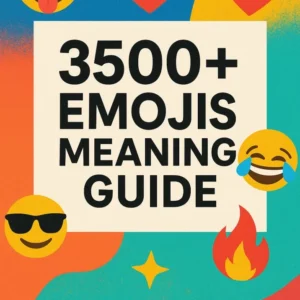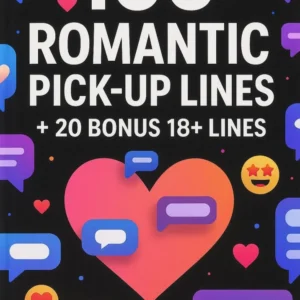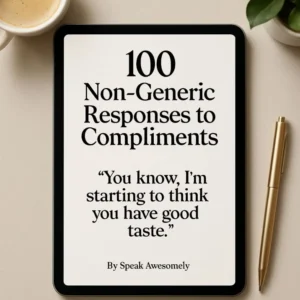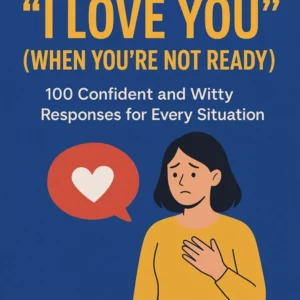Have you ever stared at your phone, puzzled, when someone dropped an orange heart emoji (🧡) in your messages? Was it just a friendly gesture, something more, or perhaps a polite way of saying, “I like you… but not that much”? I remember the first time a colleague used it in a work chat—I wasn’t sure if it meant warmth, a subtle boundary, or just their favourite colour. That moment sparked my curiosity, and I began digging into what this emoji really conveys and how we should respond to it.
Emojis are not just decorative icons anymore. They’ve become part of how we express emotions, soften tones, and add nuance to digital communication. The orange heart, in particular, often carries layers of meaning that can shift depending on context, culture, and even the relationship between sender and receiver.
In this article, we’ll explore the true meaning of the orange heart emoji, how different people use it, and practical ways you can respond without misreading intentions.
The Meaning of the Orange Heart Emoji 🧡
Unlike the classic red heart ❤️, which almost always signifies romantic love or deep affection, the orange heart sits somewhere in between. Think of it as the “middle ground” heart.
1. Friendship and Warmth
According to linguist Dr. Vyvyan Evans, who has studied digital communication extensively, emojis act as “emotional punctuation.” The orange heart often symbolises friendly affection without romantic undertones. For example, someone might send it to a classmate, colleague, or casual friend to express warmth without suggesting intimacy.
Example:
- “Had such a great time at the event today 🧡” → means appreciation and friendliness.
2. Support and Encouragement
Brands and advocacy groups often use the orange heart to show solidarity. For instance, in 2020, many organisations used 🧡 to support anti-bullying campaigns. The colour orange is also tied to energy, creativity, and encouragement, making this emoji ideal for cheering someone on.
Example:
- “You’ve got this exam tomorrow—you’ll smash it! 🧡”
3. Ambiguous Romantic Signal
Here’s where things get tricky. Some people use the orange heart in relationships where emotions are unclear—it can mean “I like you, but I’m not ready for the red heart yet.” A study on emoji use by the University of Minnesota found that heart colours are often chosen deliberately to convey levels of intimacy. Orange, being less intense than red, suggests attraction but with caution.
Example:
- “Last night was fun 🧡” → could mean interest, but with subtle boundaries.
4. Aesthetic or Branding Choice
Sometimes, the meaning is less about emotion and more about style. Influencers, designers, or even your fashion-forward friend might use the orange heart simply to match their feed or personal brand.
Example:
- A lifestyle blogger posting autumn photos with 🧡 to match the season’s palette.
How Context Changes Its Meaning
To avoid misinterpreting the orange heart, always consider three layers of context:
- Who sent it? A best friend’s 🧡 isn’t the same as a new date’s 🧡.
- Where was it sent? A work Slack message versus a late-night text carries very different connotations.
- What came before and after it? Emojis rarely stand alone—the words around them shape their meaning.
Personal insight: I once received an orange heart from a client after a successful campaign. At first, I was confused, but after re-reading the message, it was clear—it was just a warm, professional thank-you, not an invitation for drinks!
How to Respond to the Orange Heart Emoji
Now comes the practical part: how do you reply when someone sends you 🧡? Your response depends on the relationship, the tone of the conversation, and your own comfort level.
1. Friendly/Platonic Situations
If it’s from a friend or colleague, respond with equal warmth but without overthinking it.
Responses:
- “Always happy to help 🧡”
- “That means a lot, thank you 🧡”
2. Romantic Ambiguity
If you sense it’s testing the waters, you can mirror the energy or clarify your stance.
Responses:
- Playful: “Orange heart, eh? Not quite red yet? 😉🧡”
- Neutral: “Glad you enjoyed last night too 🧡”
3. Professional/Networking
Keep it professional while acknowledging the warmth.
Responses:
- “Great collaborating with you on this 🧡”
- “Thanks for the quick turnaround, really appreciate it 🧡”
4. Social Media or Aesthetic Context
Match the vibe—if it’s purely stylistic, don’t overanalyse.
Responses:
- “Loving this autumn energy 🧡”
- “This fits your aesthetic perfectly 🧡”
Expert-backed Insights on Emoji Use
- Emojis Improve Digital Communication: A 2022 Adobe survey found that 73% of Gen Z and Millennials believe emojis make conversations more sincere.
- Gender Differences: Research published in Computers in Human Behavior notes that women tend to use coloured heart emojis more frequently to maintain friendships, whereas men are more selective and often stick to the red heart.
- Professional Settings: A Harvard Business Review article suggests that using emojis sparingly in professional communication can increase likability without reducing credibility, especially in remote work settings.
These insights confirm that the orange heart isn’t just a trivial symbol—it’s part of how modern relationships and work cultures are shaped online.
FAQs
Q1: Does the orange heart mean someone likes me romantically?
Not always. It often represents friendship or encouragement. If you’re unsure, consider the broader context of your relationship.
Q2: Is the orange heart flirty?
It can be, especially if paired with other emojis (like 😉 or 😘). But on its own, it’s usually softer than the red heart.
Q3: What’s the difference between 🧡 and ❤️?
🧡 = warm, platonic, or tentative feelings. ❤️ = romantic love or deep emotional connection.
Q4: Should I use 🧡 in professional settings?
Yes, but sparingly. It works well in team chats or appreciation messages but avoid it in highly formal contexts like cover letters.
Read Also: Brown Heart Emoji Meaning and How to Respond to It
Final Thoughts
The orange heart emoji 🧡 is a symbol of warmth, encouragement, and sometimes gentle ambiguity. Its meaning shifts depending on who uses it and where, but it’s generally a softer alternative to the red heart. Whether in friendships, professional chats, or budding romances, the orange heart strikes a balance between friendliness and caution.
So, next time you receive an 🧡, don’t panic—pause, read the context, and respond in a way that reflects both your relationship and your intentions.
Have you ever misread an orange heart emoji? Share your story in the comments—I’d love to hear how you responded!
Recommended Products

3,500+ Emoji Meanings Guide (2025 Edition) – Speak Awesomely’s Ultimate Digital Handbook for Every Emoji Explained
Original price was: $ 30.$ 10Current price is: $ 10.Add to Cart
100 Romantic Pick-Up Lines + 20 Bonus 18+ Lines | Modern Dating & Flirting Guide for Confidence, Charm, and Attraction
Original price was: $ 25.$ 10Current price is: $ 10.Add to Cart
100 Witty & Unexpected Responses to Compliments – Speak Awesomely’s Ultimate PDF Guide for Confident, Clever Conversations
Original price was: $ 15.$ 6Current price is: $ 6.Add to Cart
100 Smart & Heart-Savvy Responses to ‘I Love You’ (When You’re Not Ready) – Speak Awesomely’s Essential Communication Guide
Original price was: $ 17.$ 10Current price is: $ 10.Add to Cart




